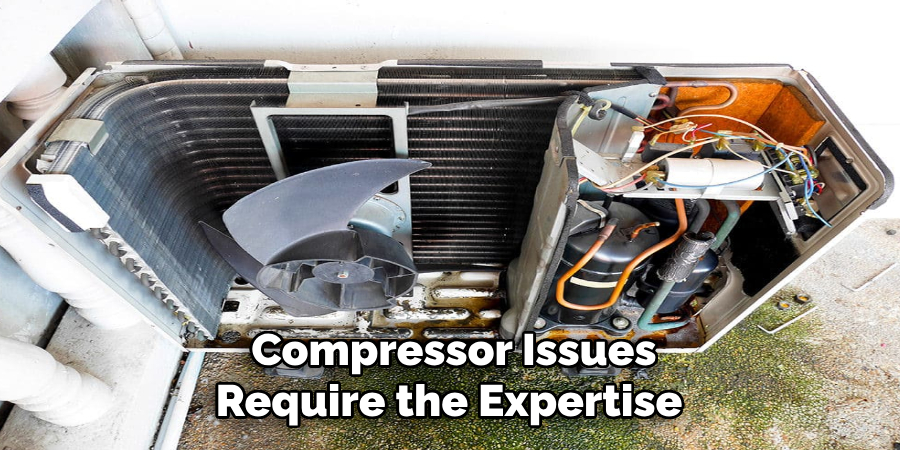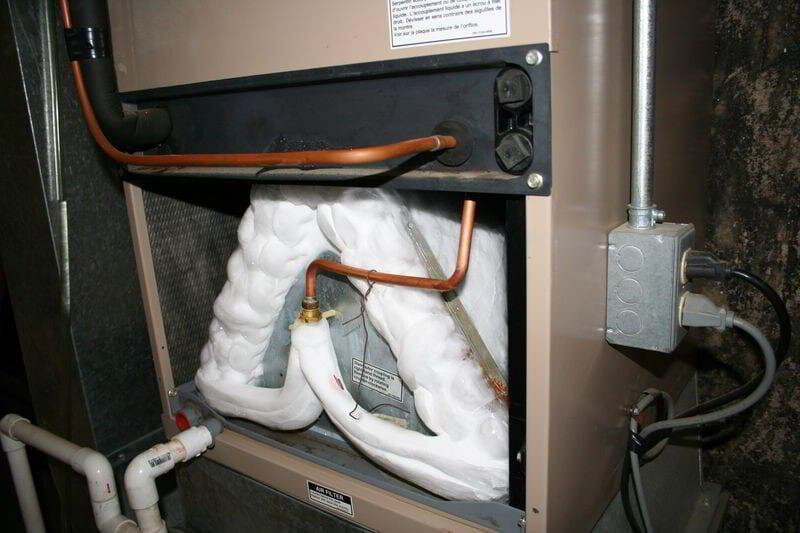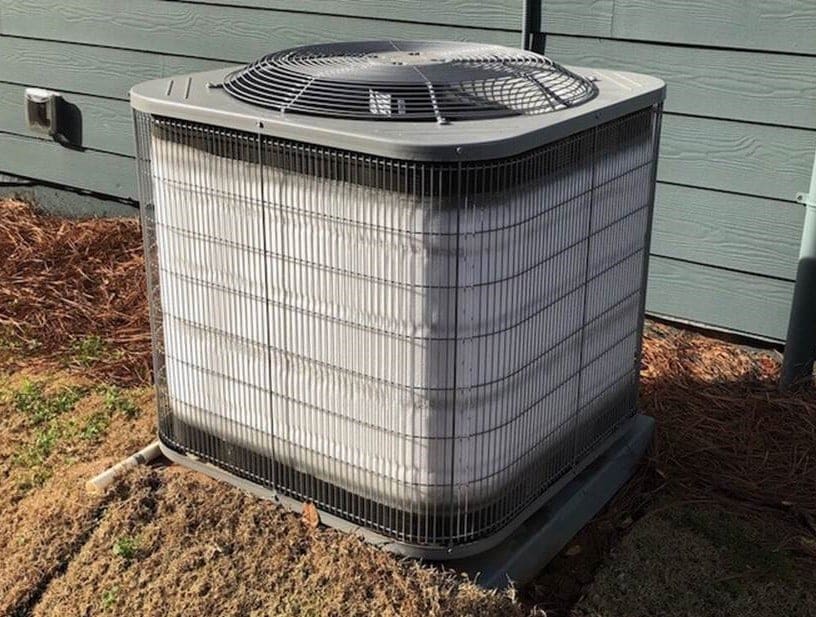How To Fix A Frozen Air Conditioner Unit

There's nothing quite as frustrating as a frozen air conditioner on a hot day. You're expecting cool relief, but instead, you find a block of ice where your AC unit should be functioning efficiently. It's a common problem, but the good news is that many causes are easily addressed with a little troubleshooting. This guide will walk you through diagnosing the issue and tackling some simple fixes yourself. Remember, safety first! If you're ever unsure or uncomfortable, calling a qualified HVAC technician is always the best course of action.
Diagnosing a Frozen AC Unit: A Step-by-Step Guide
Before you start poking around your AC unit, it's crucial to understand the telltale signs of a frozen system and how to diagnose the problem systematically. Here's a breakdown:
Step 1: Visual Inspection
Turn off your AC unit at the thermostat. This is your first and most important step to prevent further damage and ensure your safety.
Head to your outdoor unit (the condenser). Look closely at the copper lines running into the unit and the evaporator coil (the part you can usually see through the grates). Are they covered in ice? If so, congratulations (sort of!), you've visually confirmed that your AC is indeed frozen. Don't touch the icy parts with bare hands, as the metal can be extremely cold.
Next, check the indoor unit (the air handler). Listen for any unusual noises coming from the unit. Remove the access panel (usually secured with screws) and visually inspect the evaporator coil inside. Is it also covered in ice? Sometimes, the ice formation is more pronounced on the outdoor unit, but it's worth checking both. Take a picture of the icing, it will be helpful if you need to call a technician later.
Step 2: Check the Air Filter
A dirty air filter is one of the most common culprits behind a frozen AC unit. A clogged filter restricts airflow, causing the evaporator coil to become too cold and freeze. This is because the refrigerant absorbs heat from the air passing over the coils. With less air flowing through, the refrigerant gets too cold and causes condensation that freezes onto the coil.
Locate your air filter (usually near the indoor unit or inside the return air vent). Remove it and hold it up to the light. Can you see light easily through the filter? If not, it's likely clogged. Even if it looks "okay," if you haven't changed it recently, it's worth replacing it as part of the troubleshooting process.
Step 3: Inspect the Vents
Make sure that your supply vents (the ones blowing out cold air) are open and unobstructed. Closed or blocked vents can restrict airflow, similar to a dirty air filter, leading to coil freezing.
Walk through your home and ensure that all vents are fully open. Also, check for anything blocking the vents, such as furniture, curtains, or rugs. Pay close attention to vents in rooms that are rarely used, as they might be accidentally closed.
Step 4: Examine the Condenser Unit
The outdoor condenser unit needs proper airflow to release heat effectively. Obstructions around the unit can prevent this, causing the refrigerant to become too cold and leading to freezing.
Inspect the area around the outdoor unit. Are there any bushes, shrubs, or debris blocking the airflow? Clear away any obstructions to ensure the unit has at least two feet of clearance on all sides. Also, check the fins of the condenser unit for dirt and debris (leaves, grass clippings, etc.). You can gently clean them with a soft brush or a garden hose (using a low-pressure nozzle) – always turn off the power to the unit at the breaker before cleaning.
Step 5: Check for Leaks
While you might not be able to detect a refrigerant leak yourself, look for signs of leaks, such as oily residue near the connections on the outdoor unit or a hissing sound coming from the unit. A refrigerant leak can cause the pressure inside the system to drop, leading to the evaporator coil freezing.
DIY Fixes for a Frozen AC Unit
Now that you've diagnosed the problem, here are some simple DIY fixes you can try:
1. Replace the Air Filter
This is the easiest and often the most effective fix. Replace your dirty air filter with a new one. Make sure you choose the correct size and type of filter for your system. This allows for proper airflow and can often resolve the freezing issue.
2. Thaw the Ice
Regardless of the cause, you'll need to thaw the ice before your AC can function properly. Turn off your AC unit at the thermostat and set the fan to "on." This will circulate air over the frozen coil, helping it to thaw. Alternatively, you can turn off the entire system and simply let the ice melt naturally, which may take several hours. Do not use a hairdryer or other heat source to speed up the thawing process, as this could damage the coils.
To help with the melting, you can carefully use a wet/dry vacuum to remove any excess water that accumulates as the ice melts. Make sure to position the vacuum so that it doesn't get electrical components wet.
3. Ensure Proper Airflow
After replacing the filter and thawing the ice, ensure that all vents are open and unobstructed. Also, double-check that the area around the outdoor unit is clear of any debris. Good airflow is crucial for preventing the problem from recurring.
4. Run the Fan
After the ice has completely melted and you've addressed the potential causes (dirty filter, blocked vents, etc.), turn on your AC unit and monitor its performance. Try running the fan continuously for a day or two to improve airflow and prevent future freezing. If the problem persists, move on to the next step.
When to Call a Professional
While some issues are easily resolved with DIY fixes, certain situations require the expertise of a qualified HVAC technician. Here's when it's time to call in the pros:
- Refrigerant Leak: If you suspect a refrigerant leak (oily residue, hissing sound), do not attempt to fix it yourself. Refrigerant is a hazardous substance, and handling it requires specialized equipment and training. A professional can locate and repair the leak, and recharge the system with the correct amount of refrigerant.
- Frozen Coils Persist: If you've replaced the air filter, ensured proper airflow, and thawed the ice, but the coils continue to freeze, there's likely a more serious underlying issue. This could be a problem with the compressor, the expansion valve, or another component of the system.
- Electrical Issues: If you notice any signs of electrical problems, such as burning smells or sparks, immediately turn off the power to the unit and call a professional. Electrical repairs should only be performed by qualified technicians.
- Old or Inefficient Unit: If your AC unit is old and frequently freezing, it might be time to consider replacing it with a more energy-efficient model. A professional can assess your system and recommend the best options for your needs.
- You're Unsure: If you're ever unsure about any aspect of troubleshooting or repairing your AC unit, it's always best to err on the side of caution and call a professional. They have the knowledge and experience to diagnose and fix the problem safely and effectively.
Remember, attempting to fix complex issues yourself can potentially damage your system further or even create a safety hazard. Don't hesitate to seek professional help when needed.
Preventing Future Freezing
Once you've fixed the frozen AC unit, it's important to take steps to prevent the problem from recurring. Here are some tips:
- Regularly Replace Air Filters: Change your air filter every one to three months, depending on the type of filter and the air quality in your home. A clean filter ensures proper airflow and prevents the evaporator coil from freezing.
- Schedule Annual Maintenance: Have your AC unit professionally inspected and maintained at least once a year. A technician can identify and address potential problems before they lead to freezing or other issues.
- Keep Vents Clear: Make sure that all vents are open and unobstructed, allowing for proper airflow throughout your home.
- Maintain Outdoor Unit: Keep the area around the outdoor unit clear of debris, and clean the fins regularly to ensure proper airflow.
- Consider a Smart Thermostat: A smart thermostat can help you optimize your AC usage and prevent overcooling, which can contribute to freezing.
By following these tips, you can keep your AC unit running smoothly and efficiently for years to come.
Dealing with a frozen AC unit can be a frustrating experience. However, by following these steps, you can often diagnose and fix the problem yourself. Remember to prioritize safety and don't hesitate to call a professional when needed. With a little knowledge and effort, you can keep your home cool and comfortable all summer long.










